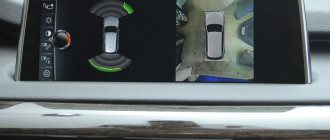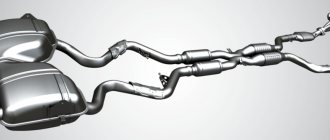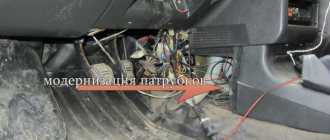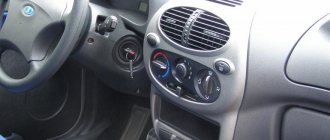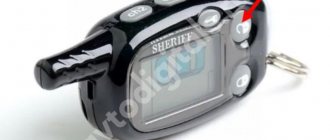The brakes of a modern car have gone through many stages of improvement, both based on new technologies and based on experience in using them in various driving situations. As a result, it turned out that the capabilities of the braking system began to exceed the capabilities of the average driver. Since a person could no longer quickly and effectively use the braking system. An assistant was needed in the form of an electronic system. The abbreviation BAS means exactly that – brake assist.
Why does a car need an emergency braking system BAS?
A good braking system, but bad ones are now not allowed into mass production, since the auto industry is very strict with safety, it is equipped with an ABS anti-lock system, so in almost any situation the driver is only required to press the brake pedal as hard and quickly as possible.
The brake system will perform all the tasks of vehicle controllability during braking, its stability and maximum deceleration efficiency independently.
But it is at this stage that problems arise for drivers. Sudden stress can prevent you from performing a task correctly, even something as simple as slamming hard on the brake pedal. The driver may become distracted by other interfering factors, begin to rotate the steering wheel, or even simply weaken briefly from surprise. As a result, pressing the pedal will not only be delayed, but also insufficiently energetic.
Ideally, the electronics should work completely independently of the driver. This is what the most modern active brake assistants do, but they are only at the very beginning of their development, and it is too early to rely on them, although production samples are quite functional.
But at first only passive BAS appeared, which still needed at least some driver reaction to what was happening. The driver must at least press the brake pedal. Then the automation will react to what is happening with the highest possible speed and do everything to stop the car in an emergency without losing control.
Introduction
The next live broadcast from the Anti-Malware.ru studio took place on April 27, 2021. The topic of cyber attack modeling systems (Breach and Attack Simulation, BAS) was touched upon.
Modern infrastructure cyber protection systems are rapidly evolving, developing and becoming more complex every year. There is not only an increase in the complexity of the systems themselves, but also a constant optimization of security processes in the company.
It is becoming increasingly difficult to determine the vector of movement to strengthen protection. Companies conduct pentests, redtiming, vulnerability scanning - they are looking for various solutions that will help somehow assess the current level of security and see weaknesses. Routine processes require automation of solutions. Data on predicting potential vectors is no longer enough; a systematic launch of simulation of real actions of an attacker is necessary.
BAS solutions help automate this simulation, and the results obtained provide an up-to-date picture of the company’s security status. But what is more effective: pentest, Red Team or BAS? How much does it cost? Which companies are recommended for BAS? Speakers answer questions and discuss the current state of BAS-type systems in Russia and beyond.
The following were invited to the meeting as experts:
- Maxim Pyatakov , Deputy General Director of CTRLHACK.
- Roman Bogomolov , head of technical expertise at Fortis.
- Valeria Suvorova , expert at the Information Security Center.
The moderator was Lev Paley , head of the information security service of SO UES JSC.
Listeners joined the live broadcast: asked questions in the chat, participated in surveys, the results of which formed the current understanding of the topic under discussion. We invite you to familiarize yourself with the key points of the last meeting.
How the Brake Assist System works
The convulsive actions of a driver in an extreme situation will be easily recognized by the electronics of the BAS system. For this purpose, signals from several sensors are used:
- a limit switch on the brake pedal, which is responsible, in particular, for turning on the brake lamps;
- a pressure sensor in the brake line, which records the force of pressing the pedal and the rate of increase of this force;
- wheel speed sensors that carry information about vehicle speed;
- a displacement sensor on the rod of the vacuum brake booster (VUT), the readings of which can also be used to estimate the speed at which the pedal is pressed.
Of course, the system can be implemented in different ways, and not this entire set of sensors is used on a particular machine.
All data is compiled into an electronic unit, which makes a decision to provide assistance when the maximum emergency braking mode is used. A control signal is generated, which is supplied to control the ABS valve body and the atmospheric valve in the vacuum booster.
As a result, the force from the VUT increases, and additional fluid pressure is supplied to the brake actuator cylinders from the hydraulic pump and the receiver of the ABS module. Braking becomes as effective as possible, as if the driver immediately, sharply and without delay pressed the pedal with maximum force.
When you just need help...
In principle, the meaning of the existence of the emergency braking system is clear from its name, but there are nuances that are worth knowing about.
So, the BAS (Brake Assist System) technology we mentioned at the very beginning of the article is actually more correctly called an emergency braking assistance system, and this caveat is very important!
The principle of its operation is as follows - the electronics calculates the moment when you sharply hit the brake pedal (which means something wrong has happened), and, as it were, presses it to the maximum, increasing the pressure in the line to the highest possible value.
Thanks to this, the car will stop quickly and without human hesitation. BAS technology is just one of many variations of such a system, used on the creations of Mercedes-Benz, BMW, Toyota, and other automakers.
Each automaker comes up with names for its system to highlight its interests - AFU, EBA, HBA, SBC and so on, so the names are different, but the principle is the same.
Technically, there are two options for the emergency braking assistance system:
- pneumatic;
- hydraulic.
The first type, when detecting a sharp press on the brake pedal, which is connected to the vacuum booster and its rod, activates a special electromagnet that brings the position of the rod to its extreme position.
Thanks to this, the pressure in the brake line becomes maximum. This scheme works in conjunction with ABS, which, in turn, prevents the wheels from locking.
Mercedes-Benz, Toyota, BMW, Volvo use BA, BAS, EBA systems, while Renault, Citroen, Peugeot use AFU.
Hydraulic versions of Brake Assist also monitor the force with which the driver presses the pedal, but other sensors are sometimes present to help the electronics analyze the situation more deeply. The maximum braking force in this type is achieved by pumping the pressure of the working fluid into the line with pumps.
Emergency hydraulic braking assistance systems include:
- Hydraulic Braking Assistance (HBA) - Audi and Volkswagen;
- Dynamic Brake Control (DBC) - BMW;
- Hydraulic Brake Booster (HBB) - Audi and Volkswagen;
- Brake Assist Plus (BA Plus) - Mercedes-Benz;
- Sensotronic Brake Control (SBC) - Mercedes-Benz/
//www.youtube.com/watch?v=mfKQAwrAzsc
Types of BAS
Help can be provided both by increasing the fluid pressure at the outlet of the master cylinder module with a brake booster, and inside the ABS valve body.
Pneumatic system
The vacuum brake booster, which is found in almost every car, operates on the pneumatic principle. It consists of two chambers separated by a flexible membrane, in one of which a vacuum is created from the engine intake manifold or a separate vacuum pump, and the other can be controlled controlled by air under atmospheric pressure.
The boost, that is, the additional force applied to the rod of the master cylinder, depends precisely on the difference between these two pressures.
During normal braking, the booster operates normally, relieving some of the stress from the driver's foot on the pedal. But if the rod moves too quickly and with significant force, an additional valve system is activated, immediately applying the entire force of atmospheric pressure to the membrane.
It turns out that with the same force of the driver’s foot, a significantly greater force is already applied to the piston of the main cylinder. VUT operates according to emergency rules.
Hydraulic system
On machines equipped with ABS, there is already a hydraulic unit that combines a system of valves that allows or shuts off fluid pressure to the actuating wheel mechanisms, a hydraulic pump with a receiver that creates and accumulates significant energy from the fluid under pressure, and control electronics. ABS sensors are also used to create the BAS hydraulic drive.
With such tools, it is quite enough to recognize the situation of an extreme case and force the valve body to work according to the driver assistance algorithm if it cannot cope on its own. That is, apply pressure from the pump to the wheel brakes to the maximum extent, while simultaneously allowing ABS and other systems to operate as normal to maintain stability and controllability.
This is what the electronic unit does, analyzing the driver’s behavior, sometimes even in such trifles as the speed of moving the foot from the accelerator pedal to the brake pedal.
conclusions
Cyber attack modeling systems allow you to automatically simulate a real attack (both internal and external) on a company’s infrastructure, help identify weaknesses, and strengthen both the system and security processes. These solutions do not require high qualifications to use them; they have a clear interface and detailed reporting.
BAS is recommended for customers who have a budget and who have mature internal processes. The BAS market is just emerging; there is no fierce competition and the entry barrier for small companies is very high. Vendors offer flexible licensing models.
In Russia, the fashion for such systems is just emerging, and their demand in the market is growing. In the coming years, BAS will become more accessible due to an increase in the number of offers.
Subscribe to our channel, where on May 12, 2022 we will broadcast dedicated to WAF; do not miss! Participate in our polls and discussions, ask questions to speakers and colleagues in the chat, and receive up-to-date information on the latest trends in information security on AM Live.
The difference between BAS and EBD, ABS, ESP
The main difference between the BAS system and all others, based on an already standard set of sensors, hydraulics and electronics, is that only it is uncompromisingly and directly focused on reducing the vehicle’s braking distance in the event of an emergency.
All other systems, to varying degrees, pay more attention to maintaining stable behavior of the car, preserving its ability to respond to steering, and countering all kinds of drifts, skids and slides.
Of course, the same ABS, which has become the basis for all electronic assistants, is also capable of reducing braking distance in many situations; even more likely, the opposite will be an exception that must be eliminated in new versions of the system.
But it can relieve pressure from the brake pistons for some other purpose not related to shortening the stopping distance, but BAS does not. Quick deceleration assistance can only be switched off when you take your foot off the pedal, leaving other systems responsible for stability.
Application
Using the bas system is, of course, good, but if the surface is slippery, then sudden blocking of all wheels will lead to an uncontrolled skidding of the car. This can lead to unpredictable consequences, which is why developers use it in conjunction with abs. This is an anti-lock braking system that ensures that the wheels are not completely locked, which keeps the car controllable. It turns on on slippery surfaces and is activated in conjunction with pressing the brake pedal. This process is a little more complicated than with the bas system alone. When you press the brake pedal sharply, the ABS system is activated first; it does not completely block the wheels, but only reduces their rotation speed. This is the beginning of braking. Next, the computer compares the speed of the distance traveled from the moment the pedal is pressed and the time passed with the speed of the car itself. If the linear speed of rotation of the wheels is less than that of the car, then this indicates a slippery surface. If both speeds are equal, then bas, the auxiliary braking system, is activated and completely blocks the rotation of the wheels. But of course, this does not mean that the car itself will detect the danger on the way and brake in time. Therefore, driver vigilance is paramount.
ABS BAS in a car
It should be noted that using only abs alone is also not a good idea. This is due to the fact that the wheels will not stop completely when it is activated, and will ultimately lead to a head-on collision. To avoid such situations, even on a new car, all safety systems should be regularly checked and diagnosed. You can check it in two ways: measure your braking distance on different surfaces or check the car on a diagnostic stand with computer diagnostics. Such installations will measure the resistance force of the rollers and the degree of ejection of the car from the measurement zone.
After all, when driving along the road, the conditions on it are not always the same; under one wheel there will be a good and clean surface, and under another there will be sand or a puddle, or better still, spilled oil. Then, of course, when blocked on a slippery place, the wheel will slide, and on a dry surface it will slow down. To prevent this from happening, the system cyclically polls the speed sensors located in the wheels and the brake pedal sensor. And it intermittently reduces the pressure, which is expressed by characteristic knocks on the pedal itself and jolts of the car. Such manipulations allow you to average the value of adhesion to the surface, which reduces the risk of turning the car or moving skid.
The use of abs and bas systems significantly reduces the braking distance of a car on flat and hard surfaces compared to cars without such devices. Therefore, they became mandatory, just like the abs itself.
Analysis
During the study, it was found that in an emergency situation, when the driver urgently needs to stop the car, he clamps the brake stop quickly enough, but this is not always enough. In this case, the BAS system will come to the rescue. Its functions include constant monitoring of the pressure in the pedal, and the mechanism adjustment panel analyzes the received data without interruption.
If the pressure of the stopper lever exceeds the normal value, the adjustment panel gives a signal to the electromagnetic piston in the stopper vacuum amplifier, which connects one of the parts of the amplifier with atmospheres. As a consequence, the vacuum booster produces the highest voltage and thus the pressure force in the locking mechanism also rises to the highest level.

